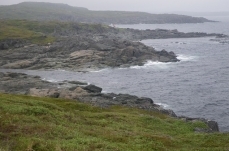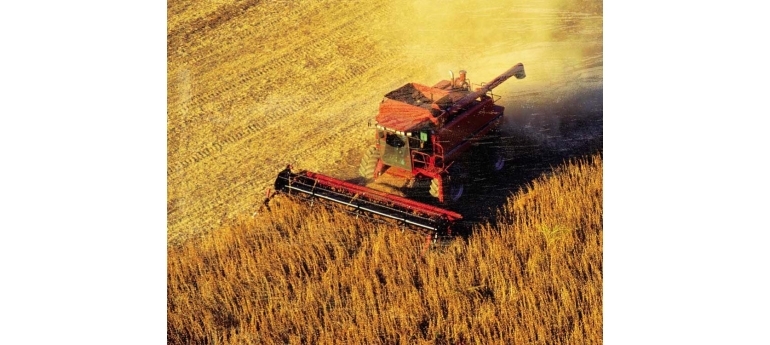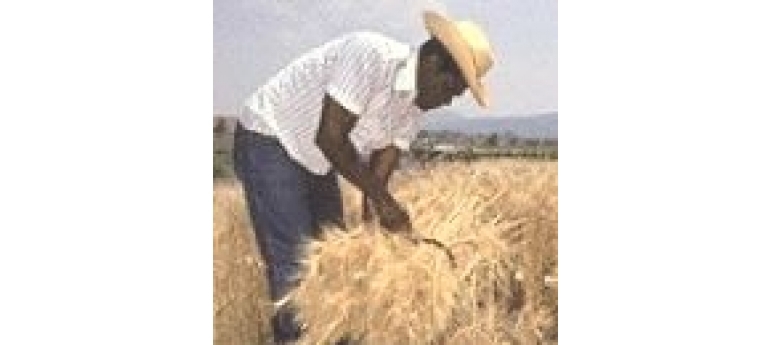Soils (main)
Soils
Soil is a complex amalgum that, of necessity, has been defined from a variety of perspectives. It has been defined as: the unconsolidated mineral or organic material on the immediate surface of the Earth that serves as a natural medium for the growth of land plants; the unconsolidated mineral or organic matter on the surface of the Earth that has been subjected to and shows effects of such genetic and environmental factors as climate (including water and temperature effects), and macro- and microorganisms—conditioned by relief—acting on parent material over a period of time. A product-soil differs from the material from which it is derived in many physical, chemical, biological, and morphological properties and characteristics.
Additionally, soil has been defined as a natural body comprised of solids (minerals and organic matter), liquid, and gases that occurs on the land surface, occupies space, and is characterized by one or both of the following: horizons, or layers, that are distinguishable from the initial material as a result of additions, losses, transfers, and transformations of energy and matter; or the ability to support rooted plants in a natural environment.
Also, the upper limit of soil is the boundary between soil and air, shallow water, live plants, or plant materials that have not begun to decompose. Areas are not considered to have soil if the surface is permanently covered by water too deep (typically more than 2.5 meters) for the growth of rooted plants.
The lower boundary that separates soil from the nonsoil underneath is most difficult to define. Soil consists of horizons near the Earth's surface that, in contrast to the underlying parent material, have been altered by the interactions of climate, relief, and living organisms over time. Commonly, soil grades at its lower boundary to hard rock or to earthy materials virtually devoid of animals, roots, or other marks of biological activity. For purposes of classification, the lower boundary of soil is arbitrarily set at 200 cm.
-
 Featured Article
Featured Article  Backshore (Soils)The backshore is that part or zone of a beach profile that extends landward from the sloping foreshore to a point of either vegetation development or a change of physiography,... More »
Backshore (Soils)The backshore is that part or zone of a beach profile that extends landward from the sloping foreshore to a point of either vegetation development or a change of physiography,... More »
-
 Featured Article
Featured Article  US-Russian High-tech Crop Map?Main Image: Tamara Smekalova (right), head of the Agrobotany Department, shows Stephanie Greene, ARS plant geneticist, herbarium specimens at the N.I. Vavilov Institute of... More »
US-Russian High-tech Crop Map?Main Image: Tamara Smekalova (right), head of the Agrobotany Department, shows Stephanie Greene, ARS plant geneticist, herbarium specimens at the N.I. Vavilov Institute of... More »
-
 Featured Article
Featured Article  Heavy metal (Soils)A heavy metal is any one of a number of elements that exhibit metallic properties, which includes transition metals lanthanides actinides as well as the metalloids Arsenic and... More »
Heavy metal (Soils)A heavy metal is any one of a number of elements that exhibit metallic properties, which includes transition metals lanthanides actinides as well as the metalloids Arsenic and... More »
-
 Featured Article
Featured Article  Burnt Cape (Soils)The Burnt Cape is a limestone barren headland on the extreme northwest of the Northern Peninsula of Newfoundland, Canada. The prevailing harsh cold climate and [calcareous]... More »
Burnt Cape (Soils)The Burnt Cape is a limestone barren headland on the extreme northwest of the Northern Peninsula of Newfoundland, Canada. The prevailing harsh cold climate and [calcareous]... More »
-
 Featured Article
Featured Article  Key Source of River SedimentationStream bank erosion and collapse have been found to be major contributors to high sediment levels in silty streams and rivers that flow into the Mississippi... More »
Key Source of River SedimentationStream bank erosion and collapse have been found to be major contributors to high sediment levels in silty streams and rivers that flow into the Mississippi... More »
-
 Featured Photo Gallery
Featured Photo Gallery  Agriculture I (Soils)Humans began to cultivate food crops about 10,000 years ago. Prior to that time, hunter-gatherers secured their food as they traveled in the nearby environment. When they... More »
Agriculture I (Soils)Humans began to cultivate food crops about 10,000 years ago. Prior to that time, hunter-gatherers secured their food as they traveled in the nearby environment. When they... More »
-
 Featured Photo Gallery
Featured Photo Gallery  Agriculture II (Soils)Humans began to cultivate food crops about 10,000 years ago. Prior to that time, hunter-gatherers secured their food as they traveled in the nearby environment. When they... More »
Agriculture II (Soils)Humans began to cultivate food crops about 10,000 years ago. Prior to that time, hunter-gatherers secured their food as they traveled in the nearby environment. When they... More »
-
 Featured Article
Featured Article  Lebônê Dirt-Powered BatteryLebônê Dirt-Powered Battery Challenge 500 million people in Africa live without power. How does it work: Ordinary soil contains large number of ... More »
Lebônê Dirt-Powered BatteryLebônê Dirt-Powered Battery Challenge 500 million people in Africa live without power. How does it work: Ordinary soil contains large number of ... More »
-
 Featured Article
Featured Article  Groundwater inflow (Soils)Groundwater inflow represents an important part of groundwater assessment methodology within the hydrological cycle. This article reviews chief methodology for estimating the... More »
Groundwater inflow (Soils)Groundwater inflow represents an important part of groundwater assessment methodology within the hydrological cycle. This article reviews chief methodology for estimating the... More »
 African Convention on the Conservation of Nature and Natural Resources Last Updated on 2014-07-09 16:51:53 Entry into Force: 16 June 1969 Preamble We, the Heads of State and Government of Independent African States, Fully conscious that soil, water, flora and faunal resources constitute a capital of vital importance to mankind; Confirming, as we accepted upon declaring our adherence to the Charter of the Organization of African Unity, that we know that it is our duty "to harness the natural and human resources of our continent for the total advancement of our peoples in spheres of human endeavour"; Fully conscious of the ever-growing importance of natural resources from an economic, nutritional, scientific, educational, cultural and aesthetic point of view; Conscious of the dangers which threaten some of these irreplaceable assets; Accepting that the utilization of the natural resources must aim at satisfying the needs of man according to the carrying capacity of the... More »
African Convention on the Conservation of Nature and Natural Resources Last Updated on 2014-07-09 16:51:53 Entry into Force: 16 June 1969 Preamble We, the Heads of State and Government of Independent African States, Fully conscious that soil, water, flora and faunal resources constitute a capital of vital importance to mankind; Confirming, as we accepted upon declaring our adherence to the Charter of the Organization of African Unity, that we know that it is our duty "to harness the natural and human resources of our continent for the total advancement of our peoples in spheres of human endeavour"; Fully conscious of the ever-growing importance of natural resources from an economic, nutritional, scientific, educational, cultural and aesthetic point of view; Conscious of the dangers which threaten some of these irreplaceable assets; Accepting that the utilization of the natural resources must aim at satisfying the needs of man according to the carrying capacity of the... More »  Successional Soils: How edaphic conditions change within aggrading forests in a case study of the North Carolina Piedmont Last Updated on 2014-06-30 15:03:45 Soil composition—its abiotic physical and chemical properties—changes under an aggrading forest. Through "space for time studies" in the Piedmont of North Carolina, researchers have examined changes in soil composition and processes among three successional stages of old fields. Differences in nitrification rates, nutrient concentration, and acidity indicate that soil nutrient availability decreases during the course of forest succession. The characteristics of forest change are highly interconnected with changes in soil conditions through time. A positive relationship exists between species richness and soil nutrient availability. Organisms can change the chemical composition of the soil, which in turn influences the forest composition. For example, some species of trees and other plants decrease soil pH while others increase nitrogen availability. Much... More »
Successional Soils: How edaphic conditions change within aggrading forests in a case study of the North Carolina Piedmont Last Updated on 2014-06-30 15:03:45 Soil composition—its abiotic physical and chemical properties—changes under an aggrading forest. Through "space for time studies" in the Piedmont of North Carolina, researchers have examined changes in soil composition and processes among three successional stages of old fields. Differences in nitrification rates, nutrient concentration, and acidity indicate that soil nutrient availability decreases during the course of forest succession. The characteristics of forest change are highly interconnected with changes in soil conditions through time. A positive relationship exists between species richness and soil nutrient availability. Organisms can change the chemical composition of the soil, which in turn influences the forest composition. For example, some species of trees and other plants decrease soil pH while others increase nitrogen availability. Much... More »  Composting tips (Soils) Last Updated on 2014-06-29 18:07:28 Composting turns household wastes into valuable fertilizer and soil organic matter. All organic matter eventually decomposes. Composting speeds the process by providing an ideal environment for bacteria and other decomposing microorganisms. The final product, humus or compost, looks and feels like fertile garden soil. This dark, crumbly, earthy-smelling stuff works wonders on all kinds of soil and provides vital nutrients to help plants grow and look better. Decomposing organisms consist of bacteria, fungi, and larger organisms such as worms, sow bugs, nematodes, and numerous others. Decomposing organisms need four key elements to thrive: nitrogen, carbon, moisture, and oxygen. For best results, mix materials high in nitrogen (such as clover, fresh grass clippings, and livestock manure) and those high in carbon (such as dried leaves and twigs). If there is not a good supply of... More »
Composting tips (Soils) Last Updated on 2014-06-29 18:07:28 Composting turns household wastes into valuable fertilizer and soil organic matter. All organic matter eventually decomposes. Composting speeds the process by providing an ideal environment for bacteria and other decomposing microorganisms. The final product, humus or compost, looks and feels like fertile garden soil. This dark, crumbly, earthy-smelling stuff works wonders on all kinds of soil and provides vital nutrients to help plants grow and look better. Decomposing organisms consist of bacteria, fungi, and larger organisms such as worms, sow bugs, nematodes, and numerous others. Decomposing organisms need four key elements to thrive: nitrogen, carbon, moisture, and oxygen. For best results, mix materials high in nitrogen (such as clover, fresh grass clippings, and livestock manure) and those high in carbon (such as dried leaves and twigs). If there is not a good supply of... More »  Wetland destruction in the Chesapeake Bay Last Updated on 2014-05-21 12:55:14 The Chesapeake Bay (38° 32′ 35″ N, 76° 4′ 32″ W) is the largest estuary in the United States. It lies off the Atlantic Ocean, surrounded by the states of Maryland and Virginia. The Chesapeake Bay's watershed covers 64,299 square miles (166,534 km2) in the District of Columbia and parts of six states: New York, Pennsylvania, Delaware, Maryland, Virginia, and West Virginia. More than 150 rivers and streams drain into the bay. Much of the bay is quite shallow: at the point where the Susquehanna River flows into the bay, the average depth is 30 feet (9 m), although this soon diminishes to an average of 10 feet (3 m) from the city of Havre de Grace for about 35 miles (56 km), to just north of Annapolis. On average, the depth of the bay is 21 feet (7 meters), including tributaries; over 24% of the bay is less than 6 ft (2 m) deep. There are... More »
Wetland destruction in the Chesapeake Bay Last Updated on 2014-05-21 12:55:14 The Chesapeake Bay (38° 32′ 35″ N, 76° 4′ 32″ W) is the largest estuary in the United States. It lies off the Atlantic Ocean, surrounded by the states of Maryland and Virginia. The Chesapeake Bay's watershed covers 64,299 square miles (166,534 km2) in the District of Columbia and parts of six states: New York, Pennsylvania, Delaware, Maryland, Virginia, and West Virginia. More than 150 rivers and streams drain into the bay. Much of the bay is quite shallow: at the point where the Susquehanna River flows into the bay, the average depth is 30 feet (9 m), although this soon diminishes to an average of 10 feet (3 m) from the city of Havre de Grace for about 35 miles (56 km), to just north of Annapolis. On average, the depth of the bay is 21 feet (7 meters), including tributaries; over 24% of the bay is less than 6 ft (2 m) deep. There are... More »  Nitrate (Soils) Last Updated on 2013-08-11 10:09:48 Nitrate is a polyatomic ion having a molecular formula NO3- and molecular mass of 62.0049 grams per mole. This ion is the conjugate base of HNO3, its geometry consistng of one central nitrogen atom surrounded by three identically-bonded oxygen atoms in a trigonal planar arrangement. The nitrate ion carries an electrical charge of minus one, arising from a combination formal charge in which each of the three oxygen atoms carries a fractional two thirds charge, whereas the nitrogen atom carries a plus one charge, all these adding up to minus one formal charge of the polyatomic nitrate ion. This atomic arrangement is often invoked as a classic example of chemical resonance. Similar to the isoelectronic carbonate ion, the nitrate ion can be represented by resonance structures. Nitrate is a very important chemical soil amendment responsible for a major portion of the agricultural... More »
Nitrate (Soils) Last Updated on 2013-08-11 10:09:48 Nitrate is a polyatomic ion having a molecular formula NO3- and molecular mass of 62.0049 grams per mole. This ion is the conjugate base of HNO3, its geometry consistng of one central nitrogen atom surrounded by three identically-bonded oxygen atoms in a trigonal planar arrangement. The nitrate ion carries an electrical charge of minus one, arising from a combination formal charge in which each of the three oxygen atoms carries a fractional two thirds charge, whereas the nitrogen atom carries a plus one charge, all these adding up to minus one formal charge of the polyatomic nitrate ion. This atomic arrangement is often invoked as a classic example of chemical resonance. Similar to the isoelectronic carbonate ion, the nitrate ion can be represented by resonance structures. Nitrate is a very important chemical soil amendment responsible for a major portion of the agricultural... More »